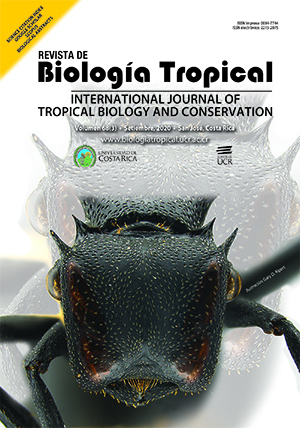Abstract
Introduction: Information on the class Ophiuroidea is very scarce, despite it consisting of the highest number of species within the phylum Echinodermata, with up to 2 100 species. In particular, there are hardly any study focused specifically to ophiuroids found along the Pacific coast of Costa Rica. Objective: Morphological and genetic characterization of ophiuroids of the shallow intertidal and sublittoral areas of Las Baulas Marine National Park (Pacific coast of Costa Rica). Methods: Sampling was conducted between January and April of 2018 at seven locations: Punta del Morro, Playa Carbón, Playa Ventanas, Playa Grande, Playa Tamarindo Ciudad, Playa Tamarindo and Playa Langosta. A total of 214 ophiuroids were characterized using taxonomic keys and original descriptions and a molecular analysis of the mitochondrial cytochrome oxidase I (COI) gene. Results: An analysis of morphological and genetic characters indicates that 11 species are present in the study site. Four may represent new species, nine constitute new records for the area and one (Ophiophragmus aff. stellatus) is recorded in Costa Rica for the first time. Additionally, juvenile individuals of different species were identified, and two cryptic species were detected. Conclusions: According to the molecular analysis, COI is useful to delimit ophiuroid species and to establish phylogenetic relationships at lower (genera and species) but not higher taxonomic levels. This study also provides images and morphological remarks for future comparative studies.
##plugins.facebook.comentarios##

This work is licensed under a Creative Commons Attribution 4.0 International License.
Copyright (c) 2020 Andrea Varela Sánchez, José Templado, Annie Machordom


